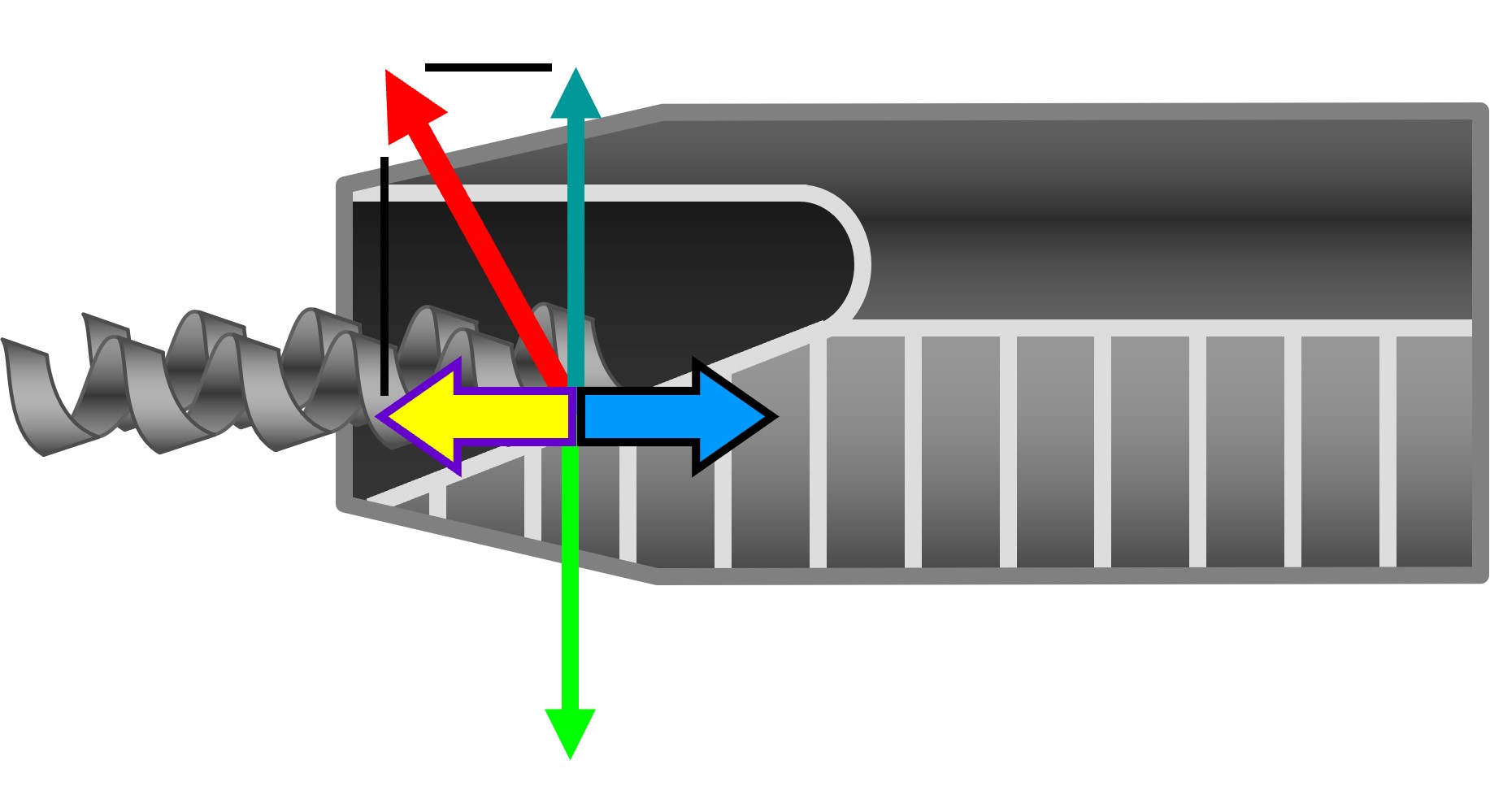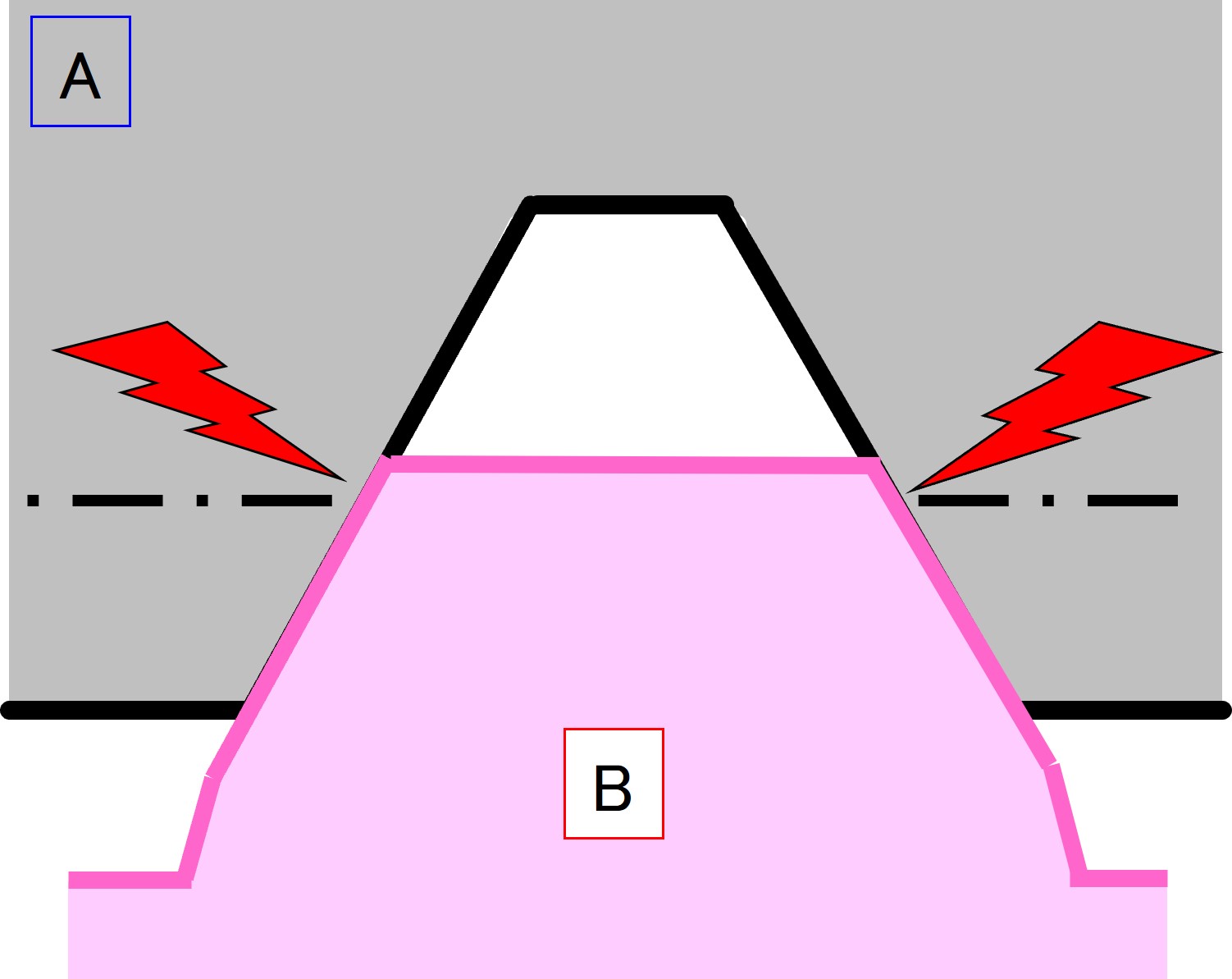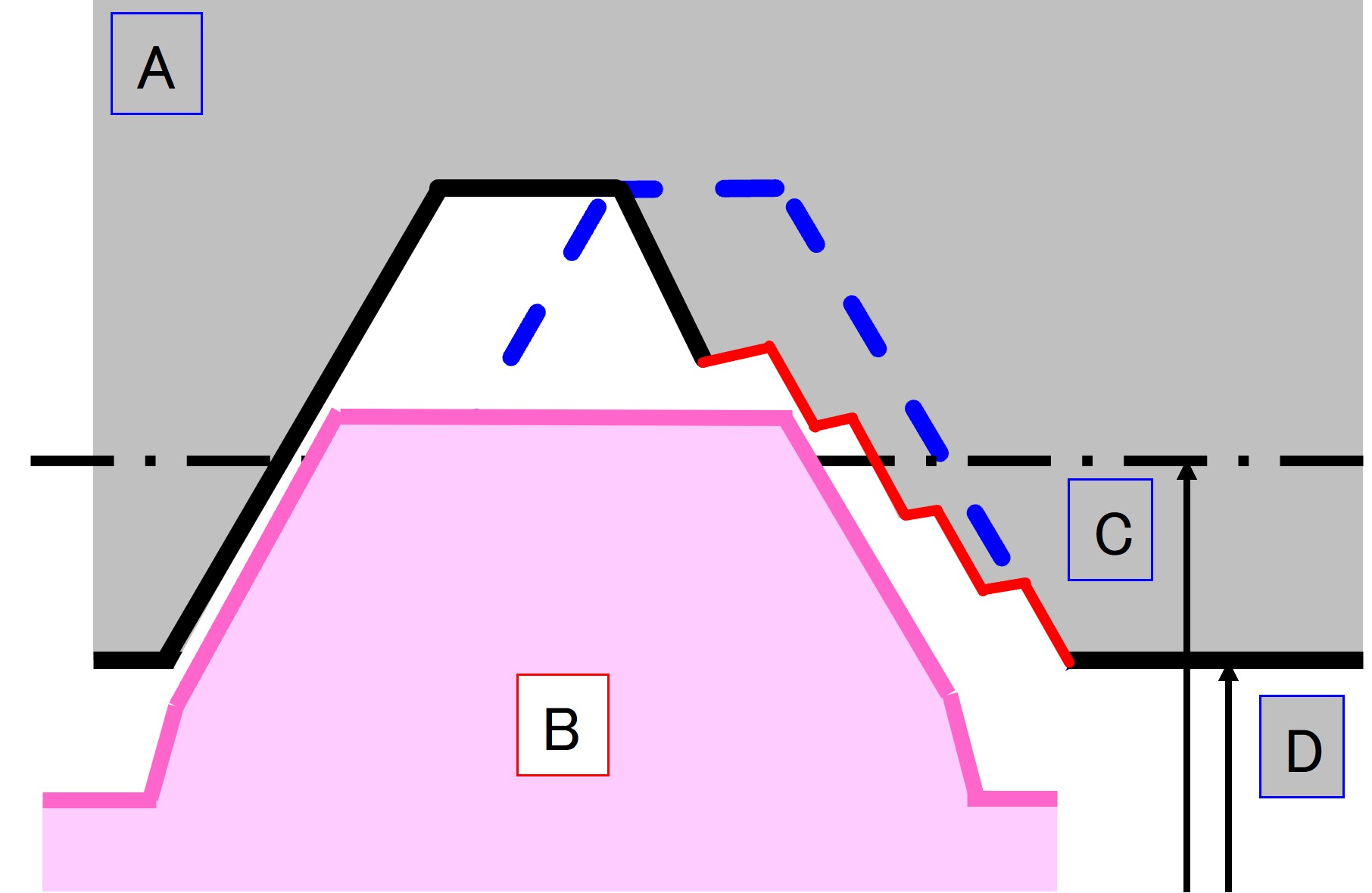In the tapping process, the state in which the thread of the internal thread is thin, as if it has been gouged out, is called "mountain thinness". There are several possible causes for such a shape.
・ Misalignment of the tap
・Welding
And so on...
Here are some additional points to note:
・Axial expansion
Here, we will introduce the causes and countermeasures when axial expansion occurs. In order to get the shape of the screw, the tap must also advance in one pitch in one rotation.
However, due to the machining load, the spiral fluted tap is progressing and the spiral pointed tap is lagging behind more than one pitch per revolution.
The misalignment of the feed causes the thread to become thinner.
| Groove twisting direction and its action | * The dotted arrow indicates the load on the workpiece. | ||
| * Arrows that are not dotted lines indicate the load on the tap. | |||
| spiral fluted tap |  |
Right-hand twist (right-hand thread) | |
| The machining load on the tap is applied in the direction of the tap. It is easier to advance than 1 rotation and 1 pitch |
|||
| spiral pointed tap |  |
Right-hand left-hand twist (right-hand thread) | |
| The machining load applied to the tap is applied in the opposite direction of the tap, and it is easy to lag behind one revolution and one pitch. | |||
If a mountain thinning occurs, the stop side gauge may not stop and the inspection may fail.
| internal thread Expansion | |
| Correct chevron shape | Chevron-shaped shape with mountain thinning (when the tap is advancing more than one pitch per rotation) |
 |
 |
|
A: internal thread side B: Stop side gauge C: Effective diameter D: minor diameter |
|
| The stop gauge does not enter | The stop gauge is entered. |
| passing | rejection |
In order to suppress the deviation and absorb the load, tooling that floats in the axial direction called a floating tapper may be used.
If you use a floating tapper to cause thread thinning, consider adjusting the springs to suppress them.
In addition, some machining centers have a function called a synchronous feed mechanism in which the machine side manages one revolution and one pitch. It is a reassuring feature for threading threads.